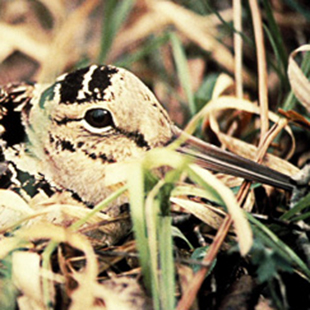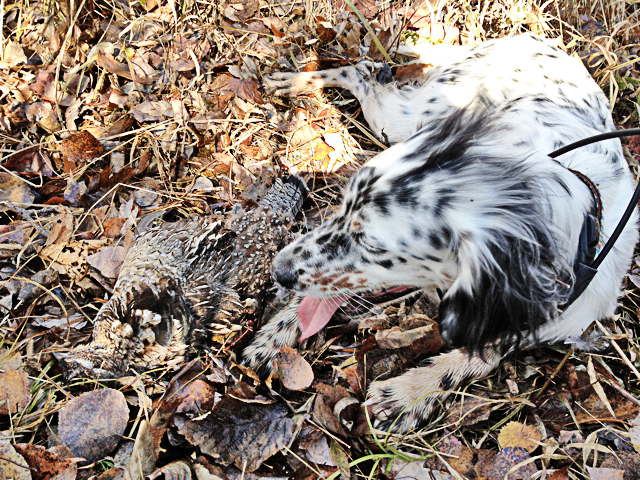 Woodcock
Woodcock
Also Goes By: Woody, Wood Snipe, Bog Snipe, Doodle, Timberdoodle
If the Woodcock looks out of place in the forest, it is because this bird is actually a type of shorebird. However, this species’ outstandingly camouflaged body makes it a part of the timber and thicket that it thrives in. Their mottled brown colored feathering allows for them to carefully scratch near the forest floor without attracting too much attention. Females are typically larger in size than the males, weighing 10 ounces to their male counterpart’s 6 or so ounces. With a round head, short neck and plump body, the Woodcock’s long beak seems disproportionate. Despite its awkward appearance, the beak enables this bird to forage for earthworms. Indeed, the Woodcock is superbly skilled at probing for worms. The cerebellum of this bird’s brain is said to have moved to a different position than it is located in other bird’s brains as a part of the Woodcock’s evolution into an effective prober. As a result, earthworms account for around 60% of this species diet while other insects like crickets and beetles make up another 30%. These birds prefer to eat just before dawn and in the early evening.
When searching for signs of the Woodcock, chalky white residue on the ground may be a good indication that the birds have recently been in the vicinity. When frightened, these birds will usually hold tight. If they do decide to run, it is wise to prepare for a chaotic and frantic flush that results in the bird flying upwards in a short spurt. The Woodcock, once flushed, will beat its wings so rapidly that the air passing through them will make a whistling sound. Take care to aim higher in anticipation of this quick flight. A 20 or 28 gauge shotgun is ideal.

